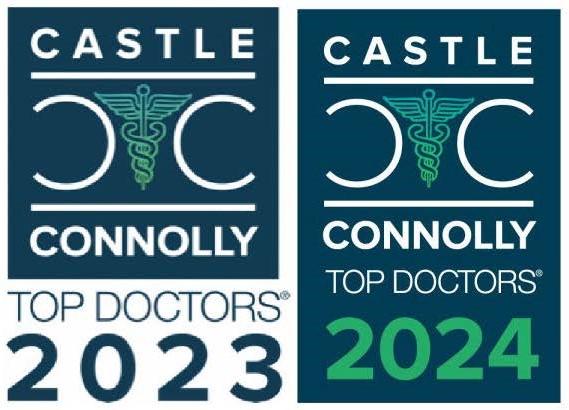
Transcranial Magnetic Stimulation (TMS) is a groundbreaking, non-invasive treatment primarily used to address depression and other mental health conditions. TMS offers a promising alternative to traditional therapies.
Yet, understanding the potential side effects is core for anyone considering this option. Although generally well-tolerated, some individuals may experience mild to moderate side effects.
What is Transcranial Magnetic Stimulation (TMS)?
Transcranial Magnetic Stimulation (TMS) is a non-invasive medical treatment that uses magnetic fields to stimulate nerve cells in the brain. It’s primarily used to treat depression especially for patients who haven’t found relief with other treatments like medication or psychotherapy.
How Does TMS Work?
TMS involves placing an electromagnetic coil against the scalp, usually near the forehead. The device sends magnetic pulses to specific areas of the brain involved in mood regulation. These pulses create small electrical currents that stimulate nerve cells. The goal is to restore normal brain activity patterns. Treatments are usually spread out over several weeks. And each session lasts about 30 to 60 minutes.
Advantages of TMS Over Other Treatments
- Non-Invasive: Unlike Electroconvulsive Therapy (ECT), TMS doesn’t require anesthesia. Patients are awake and alert during the procedure.
- Targeted Treatment: TMS precisely targets specific brain regions. This is different from medications that affect the whole body.
- Minimal Side Effects: TMS generally has significantly fewer side effects than antidepressant medications, which can cause weight gain, sexual dysfunction, and other issues.
Historical Context and FDA Approval
The foundation for understanding the brain’s electrical nature was laid in the late 18th century by Luigi Galvani. Who experimented with electricity’s effects on the body. Building on this, Michael Faraday’s 19th-century discovery of the relationship between electricity and magnetism would later prove important.
Direct electrical stimulation of the human brain began in the late 19th century. Culminating in the development of electroconvulsive therapy (ECT) by Cerletti and Bini in the 1930s. Initially hailed as a breakthrough for mental health, the overzealous application of ECT led to a decline in its popularity by the 1970s.
Then Merton and Morton introduced transcranial electrical stimulation (TES) in 1980. But due to patient discomfort, Anthony T. Barker sought an alternative. His research into magnetic field stimulation led to the creation of the first stable TMS devices in 1985. Initially used for research and diagnosis, the therapeutic potential of TMS was later explored in the 1990s. In 2008, the FDA granted approval for medical use in treating major depressive disorder.
Is Transcranial Magnetic Stimulation (TMS) Safe?
Yes, Transcranial Magnetic Stimulation (TMS) is generally considered very safe. It’s a non-invasive treatment. Which means no surgery, no implants. This inherently reduces the risk of complications that come with more invasive procedures.
TMS has undergone extensive testing and clinical trials to ensure it meets high safety standards. But as with any treatment, knowing what to expect and being aware of potential side effects is important.
Common Side Effects of Transcranial Magnetic Stimulation (TMS)
Most side effects of TMS are mild to moderate and tend to appear in the early stages of treatment. They often decrease as the body adapts to the stimulation. Some common side effects are:
- Scalp Discomfort: Many patients report a mild discomfort on their scalp where the magnetic pulses are applied. Like a mild tingling or slight pressure. It’s not severe and tends to go away quickly after the session. If it’s bothersome, adjusting the stimulation settings can help.
- Headache: Headaches are one of the most common side effects in approximately 1 in 3 individuals for the 1st week of daily session or 1st day of accelerated TMS. They’re typically mild and can be managed easily with OTC pain relievers. These headaches usually fade soon after the treatment session ends.
- Tingling or Twitching: During a TMS session, you might feel a tingling sensation or experience involuntary muscle twitches in your face, jaw, or scalp. These sensations are brief and stop once the session is over. It’s just a temporary reaction to the magnetic pulses.
- Lightheadedness: Feeling a bit lightheaded or dizzy during or right after a TMS session is not uncommon. This side effect is usually short-lived. Most people can go back to their daily activities soon after the treatment without any lasting effects.
- Fatigue: Approximately 1 in 3 individuals may experience fatigue or drowsiness after a TMS session either during the 1st week of daily treatment or the 1st day of accelerated TMS. This is thought to be the result of us increasing brain activity, which in turn the brain uses more glucose for energy and thus having something with sugar typically resolves this tiredness.
- Sleep Disturbances: Some patients notice changes in their sleep patterns. Like having trouble falling asleep or waking up more often during the night. TMS seems to influence the brain areas responsible for mood and sleep, which may cause these sleep disturbances. These disturbances are usually temporary and tend to resolve as the treatment progresses. Your doctor can help manage these changes.
- Temporary Hearing Issues: The TMS machine makes a clicking sound that can be quite loud. This noise might cause temporary hearing issues or discomfort. So wearing earplugs during the session can help reduce this risk significantly.
Serious Side Effects of TMS
It’s essential to be informed about the serious side effects even if rare. Here are some of the more serious potential risks, although they affect only a small number of patients:
- Seizures: The most serious potential side effect of TMS is a seizure. But it’s extremely rare. The risk is estimated to be less than 0.1% per patient. Cleary TMS centers follow strict guidelines to minimize this risk. Including thorough patient screening and careful adherence to safety protocols.
- Manic Episodes: For individuals with bipolar disorder, TMS can rarely trigger a manic or hypomanic episode. So this is why a detailed evaluation of the patient’s psychiatric history is crucial before starting TMS treatment. The goal is to adjust the treatment to each patient’s needs and minimize risks.
How Can I Minimize TMS Side Effects?
Transcranial Magnetic Stimulation (TMS) is generally well-tolerated. However, as mentioned, some individuals may experience side effects. Here are strategies to minimize them:
-
- Hydration and Nutrition: Ensuring you’re well-hydrated and have eaten before your session can help. Dehydration and hunger can worsen side effects such as headaches and dizziness. Drinking plenty of water and having a balanced meal can make a difference.
- Gradual Adjustment: If you experience discomfort during the session, your TMS technician can adjust the intensity and placement of the magnetic coils. This flexibility allows for a personalized approach to reduce side effects. Don’t hesitate to speak up.
- Regular Communication: Always communicate any discomfort or side effects to your technician or doctor immediately. They can adjust your treatment in real time. Open dialogue is needed for a comfortable experience.
- Consistent Schedule: Keeping your treatment sessions consistent can help your body adjust to the stimulation. It can potentially reduce side effects over time. Consistency can also build tolerance.
- Relaxation Techniques: Practicing relaxation techniques such as deep breathing or meditation before and after your sessions can help reduce anxiety-related side effects. Simple practices like these can ease your mind and body.
- Obtaining Plenty of Sleep: Ensuring you are obtaining an adequate amount of sleep can help to minimize experiencing any discomfort from the stimulation.
When Should I Contact My Doctor?
Certain side effects or symptoms should prompt you to contact your doctor:
- Severe Headaches: Mild headaches are common. But if you experience severe or persistent headaches, it is important to inform your doctor. Severe pain isn’t something to ignore.
- Changes in Mood or Behavior: Any unusual changes in mood, especially increased depression, anxiety or thoughts of self-harm, should be reported immediately. Your mental health is significant.
- Seizures: Though extremely rare, seizures are a potential side effect. Any seizure activity should be reported and evaluated immediately. It’s a serious concern that needs prompt attention.
- Hearing Issues: If you experience ringing in your ears (tinnitus) or hearing loss contact your doctor. TMS should not typically affect hearing. Especially with proper ear protection. Better safe than sorry.
- Pain or Discomfort: Any prolonged pain at the treatment site or in other areas should be discussed with your doctor. Persistent discomfort warrants a check-in.
TMS and Other Medications
Combining TMS with medications can be an effective strategy for managing treatment-resistant depression. However, there are considerations to keep in mind:
- Inform Your Doctor: Always inform your doctor about all the medications you’re taking. Including over-the-counter drugs and supplements. This helps in managing potential interactions. Full disclosure is essential for safety.
- Antidepressants: Many patients continue their antidepressant medications while undergoing TMS. Some studies suggest that combining TMS with certain antidepressants can enhance the overall treatment effect.
- Medication Adjustments: Your doctor may adjust your medication dosage during TMS treatment. Could be due to the improvement in symptoms or to mitigate side effects. It is part of personalized care.
- Monitoring Side Effects: Be vigilant about any new or worsening side effects. TMS can sometimes amplify the effects of medications. So close monitoring is essential. Stay alert and report changes.
- Avoiding Contraindicated Medications: Certain medications should be used cautiously. Your doctor will guide you on the safest options. Trust their expertise.
TMS and Pregnancy
Data suggests that TMS may be safe during pregnancy, offering an alternative to certain medications that have established risks to the fetus. Since TMS is non-invasive and does not involve medication, it could be a preferable option for pregnant women who need treatment for depression and wish to avoid medication.
However, it’s important to consult with your doctor before starting TMS if you are pregnant or planning to become pregnant. They will weigh the benefits and potential risks. They will make sure treatment is safe and appropriate for your specific situation. Always rely on professional guidance to make the best decision for you and your baby.
Disclaimer: Please note that while Transcranial Magnetic Stimulation (TMS) is generally safe and effective, individual experiences may vary. This information is not intended to replace professional medical advice. Always consult with your healthcare provider to determine the best treatment plan for your specific needs.
If you have any questions or need further assistance, we’re here to help. Contact the TMS Institute of Arizona to learn more about how we can support you on your journey to better mental health.
Contact Us to See If TMS Is Right for You
Not sure if TMS is the right choice for you? Contact us at the TMS Institute of Arizona. Our compassionate team is ready to help. Get personalized information. Understand your options. Find out if TMS can bring you the relief you deserve. Visit our website to get started.













